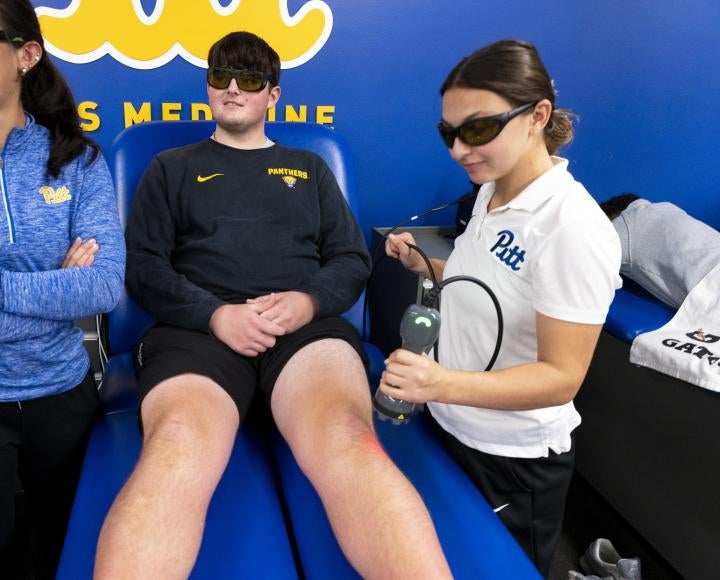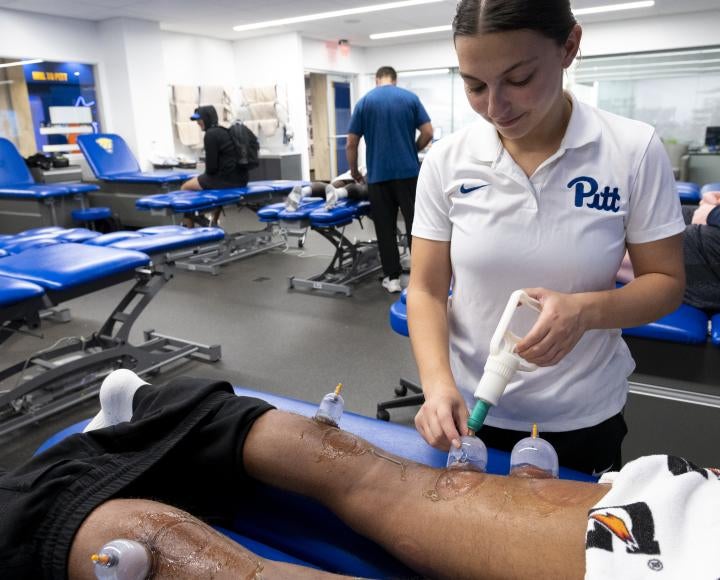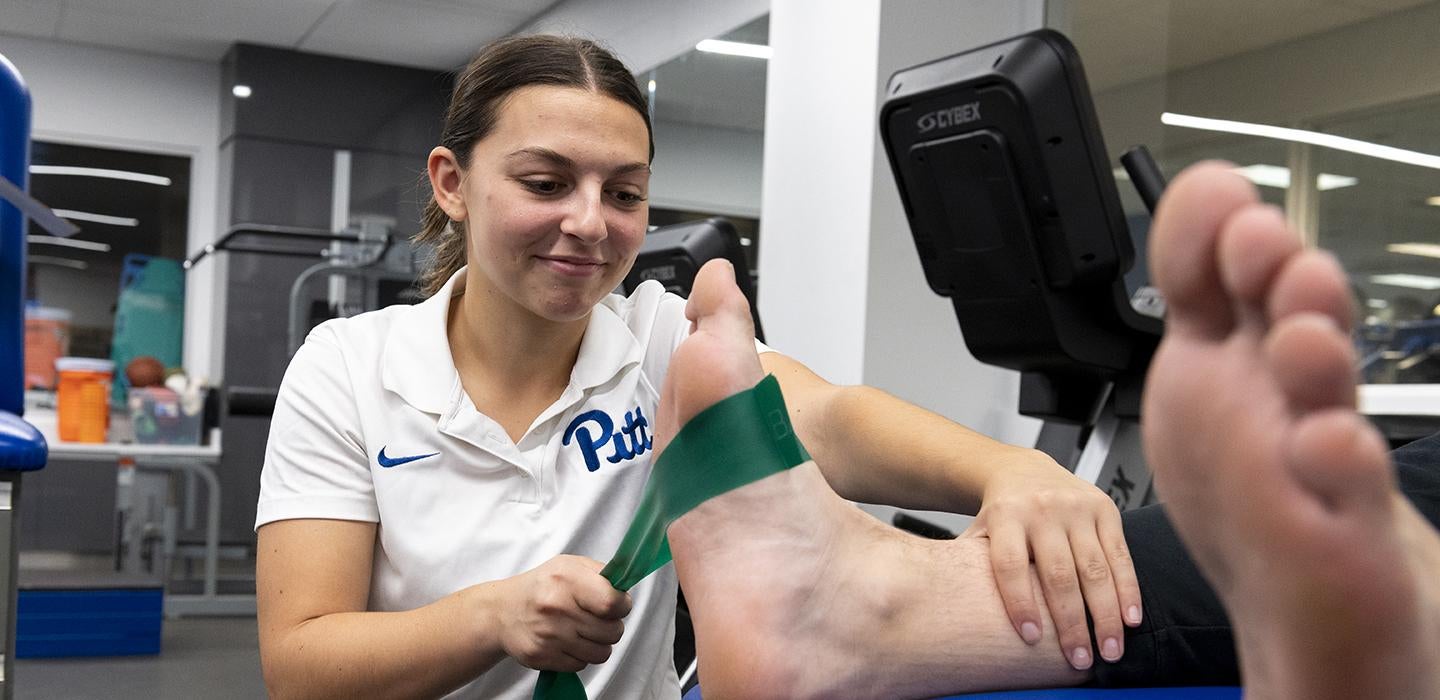
Subscribe to Pittwire Today
Get the most interesting and important stories from the University of Pittsburgh.There’s an art to wrapping a football player’s ankle — start with anchors, then alternate stirrups and horseshoes, apply two figure 8s and a set of heel-locks on each side. And whatever you do, don’t wrinkle the tape.
Pitt athletic training students practice those skills and more as part of their clinical rotation with the Pitt football team.
The 2022-23 academic year is the inaugural year of the School of Health and Rehabilitation Sciences accelerated master of science and master of science degrees in athletic training.
Students in the accelerated program complete their degree in five years total, earning a Bachelor of Science in rehabilitation science with a concentration in pre-athletic training after year four and a master's after an additional year of graduate school. Students on the general track complete their master’s in two years.
A lot of people don’t know about athletic trainers’ contributions, said Emily Duval, one of the students completing an athletic training clinical with Pitt football this semester.
“We are health care clinicians. When we’re not on the fields, we are planning treatments, conducting testing, performing therapeutic modalities behind the scenes,” she said. “I think when people do see us, it’s when a guy goes down and we’re rushing out to the middle of the field.”
But athletic trainers do so much more.
Behind the scenes
Game day magic starts early for the student athletic trainers. Six hours before kickoff, they set up on the field’s sidelines with hydration stations, sports medicine trunks, ice, a spine board and rehab tables.
Later, in the locker room, the students and their professional cohort go to work stretching, heating and taping the team.
Then finally, it’s time for kickoff. The ATs enter the field behind the players, ready to do whatever it takes to keep the team healthy.
Athletic training master’s students complete four semester-long clinical assignments categorized by the kind of injuries they might encounter. By graduation, students have completed clinics emphasizing equipment-intensive injuries, upper extremity dominant sports injuries, lower extremity dominant sports injuries and a general medical rotation. All of this guarantees that they’ve been exposed to injuries beyond what they’d see on solely treating athletes.


The job also requires advanced skills: Students completing an athletic training master's must become certified EMTs as well.
It’s crucial that students complete their medical training before starting their clinical, said Amy Angelou, director of the athletic training program in the Department of Sports Medicine and Nutrition.
“Most clinical sites aren’t like Pitt football, where a cadre of health care professionals is present. Suppose students are completing a clinical at a high school with only one professional athletic trainer on site. In that case, it’s important they can be an active member of an emergency action plan — ready to help out of an emergent situation.”
“One thing that differentiates athletic trainers from physical therapists is we do acute care management. We’re there with athletes daily, before the injury happens, and if there is an emergency, we can triage it,” she added. “Whereas people go to physical therapy post-injury after receiving a doctor’s referral.”
On practice days, three to four days a week, student athletic trainers arrive at the facility on Pittsburgh’s South Side at 5:30 a.m. and perform the same protocols on game days. Post-practice, they’re supporting the professional athletic trainers' rehab work and injury treatment.
Despite the early morning hours, the fast-paced, hands-on nature of working with Pitt football has inspired Duval to pursue a career supporting high-intensity athletes.
“I like that athletic training is a dynamic experience,” she said. “From when an athlete is injured to when they are rehabilitated, I think it's awesome to be part of the whole process,” Duval said.
Learn more about applying to the master’s program.
— Nichole Faina, photography by Tom Altany


